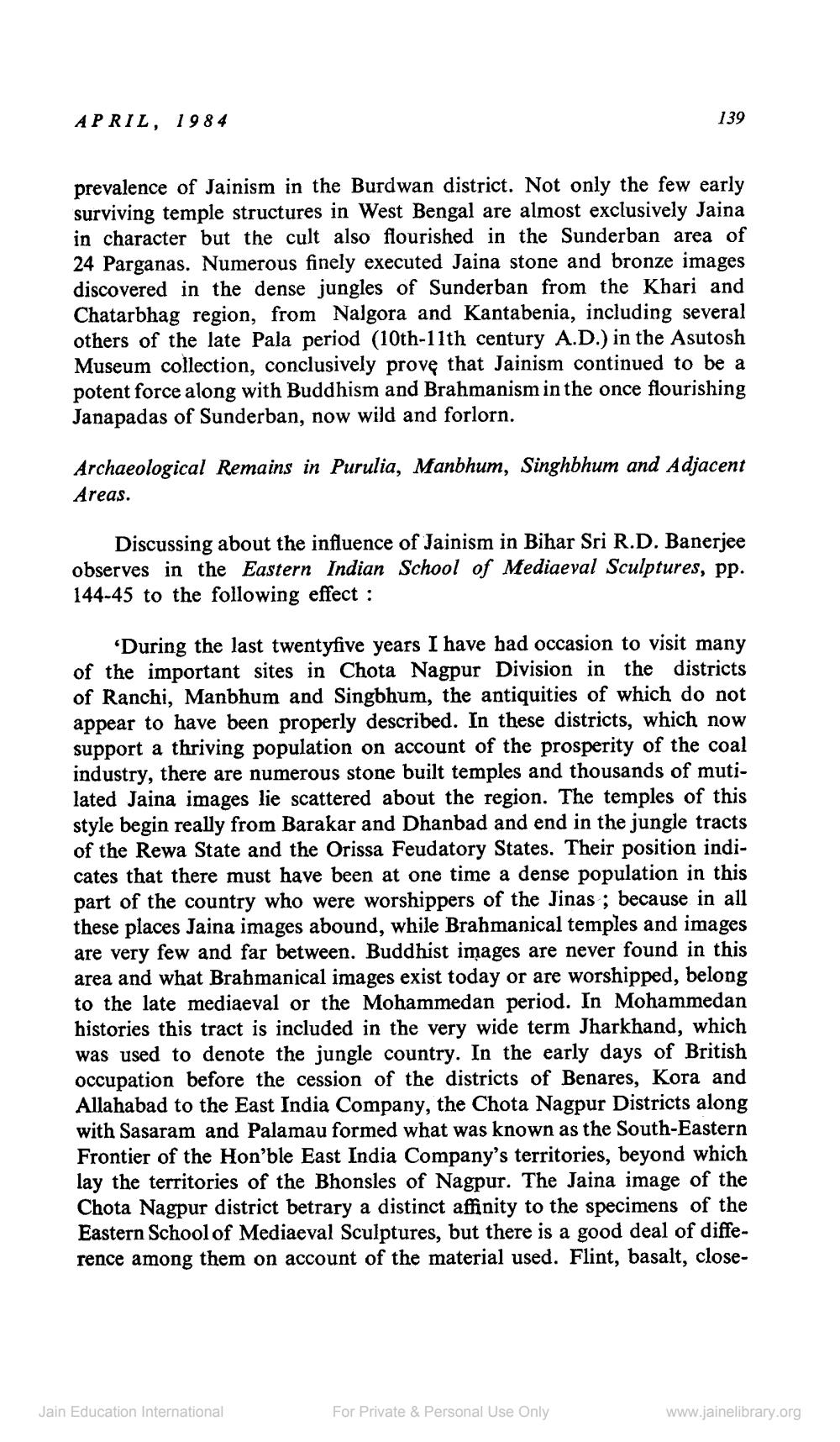________________
APRIL, 1984
prevalence of Jainism in the Burdwan district. Not only the few early surviving temple structures in West Bengal are almost exclusively Jaina in character but the cult also flourished in the Sunderban area of 24 Parganas. Numerous finely executed Jaina stone and bronze images discovered in the dense jungles of Sunderban from the Khari and Chatarbhag region, from Nalgora and Kantabenia, including several others of the late Pala period (10th-11th century A.D.) in the Asutosh Museum collection, conclusively prove that Jainism continued to be a potent force along with Buddhism and Brahmanism in the once flourishing Janapadas of Sunderban, now wild and forlorn.
139
Archaeological Remains in Purulia, Manbhum, Singhbhum and Adjacent Areas.
Discussing about the influence of Jainism in Bihar Sri R.D. Banerjee observes in the Eastern Indian School of Mediaeval Sculptures, pp. 144-45 to the following effect :
'During the last twentyfive years I have had occasion to visit many of the important sites in Chota Nagpur Division in the districts of Ranchi, Manbhum and Singbhum, the antiquities of which do not appear to have been properly described. In these districts, which now support a thriving population on account of the prosperity of the coal industry, there are numerous stone built temples and thousands of mutilated Jaina images lie scattered about the region. The temples of this style begin really from Barakar and Dhanbad and end in the jungle tracts of the Rewa State and the Orissa Feudatory States. Their position indicates that there must have been at one time a dense population in this part of the country who were worshippers of the Jinas; because in all these places Jaina images abound, while Brahmanical temples and images are very few and far between. Buddhist images are never found in this area and what Brahmanical images exist today or are worshipped, belong to the late mediaeval or the Mohammedan period. In Mohammedan histories this tract is included in the very wide term Jharkhand, which was used to denote the jungle country. In the early days of British occupation before the cession of the districts of Benares, Kora and Allahabad to the East India Company, the Chota Nagpur Districts along with Sasaram and Palamau formed what was known as the South-Eastern Frontier of the Hon'ble East India Company's territories, beyond which lay the territories of the Bhonsles of Nagpur. The Jaina image of the Chota Nagpur district betrary a distinct affinity to the specimens of the Eastern School of Mediaeval Sculptures, but there is a good deal of difference among them on account of the material used. Flint, basalt, close
Jain Education International
For Private & Personal Use Only
www.jainelibrary.org




